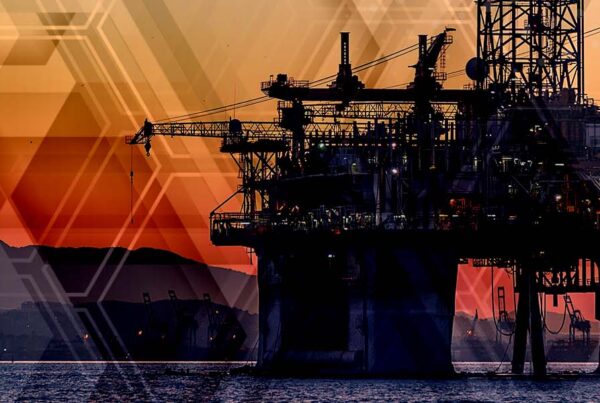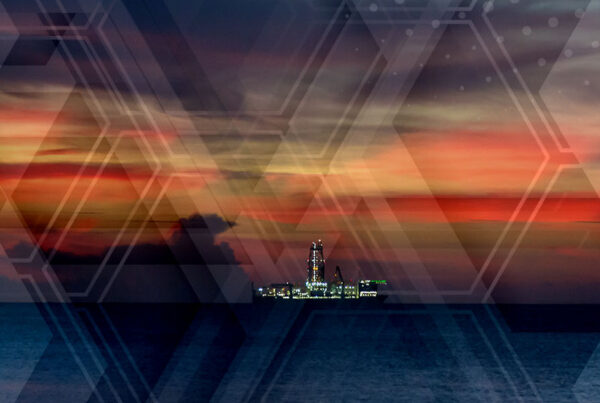MAY 2025
Last month, members of the Westwood Hydrogen team attended the Green Hydrogen Forum in Amsterdam, where we presented key insights from our recent Hydrogen White Paper. The paper explores the realistic opportunities for European hydrogen, focused on three critical areas that are going to help unlock the market’s potential. The forum reinforced many of our findings, and several key themes emerged including:
- Hydrogen has gone through its hype cycle, faced significant obstacles, and now requires a more realistic approach
- Supportive regulations are a key enabler – with the EU’s RFNBO additionality rules taking effect in 2027, the pressure is on to advance projects within a narrowing regulatory window
- Funding remains crucial – only projects with substantial public subsidies and clearly defined offtake are progressing
- The focus must shift to practical end-use cases – identifying the end-use demand sectors that will drive demand for renewable and low-carbon hydrogen
- Infrastructure is key – robust pipeline (and storage) networks are needed to progress large-scale industrial applications
In this edition of Hydrogen Compass we explore some of the key developments in April that reflect core themes from the forum.
The next edition will be published in June. In the meantime, if you have any comments or feedback, please do reach out to Jun Sasamura ([email protected]).
Regulations and policy are evolving
A key point raised at the forum – and echoed in our White Paper – was the slowdown in hydrogen project development, particularly due to regulatory uncertainty. This was clearly illustrated by the temporary suspension of BP and HyCC’s 250MW H2-Fifty project in the Port of Rotterdam. In early April, the project was put on hold pending the Dutch government’s implementation of the EU’s updated Renewable Energy Directive (RED III) into national law.
However, by the end of the month, the project was revived. This followed the Netherland’s Council of Ministers announcement of a national target requiring industry to use 4% renewable hydrogen by 2030. Rather than enforcing a stricter mandate to meet the EU’s 42% industry RFNBO[1] target, the Netherlands has opted for a more flexible, subsidy-driven approach. While the 4% target falls short of the EU benchmark, it reflects a pragmatic strategy – one that emphasises incremental scaling at a more appropriate pace for the market. It may also set a precedent for other member states grappling with similar implementation challenges.
France also made notable adjustments to its hydrogen policy in April. The government revised its hydrogen strategy, lowering its 2030 target for renewable and nuclear-powered hydrogen electrolyser capacity from 6.5GW to 4.5GW, and its 2035 target from over 10GW to 8GW. This shift reflects delays in technological maturity, high production costs, and slow regulatory development. Despite setbacks, France remains committed to low-carbon hydrogen, leveraging its low-carbon electricity mix from nuclear and renewables to decarbonise the country’s industries.
The updated strategy has a focus on prioritising domestic hydrogen production in the near term and potentially incorporating imports of hydrogen derivatives after 2035. It additionally highlights ambitions to grow France’s hydrogen technology export capabilities. Although the revised targets are more grounded in current market realities, they remain ambitious and will require continued public funding and a stable regulatory framework to succeed.
Funding continues to be allocated
Funding – a key factor in enabling the European hydrogen market – continues to flow. Notably, Spain has announced significant allocations supporting the development of renewable hydrogen infrastructure and industrial applications. The table below highlights funding announcements from April:
| Funding Source | Funding Details |
| Connecting Europe Facility (CEF) | The EU’s Climate, Infrastructure and Environment Executive Agency called for €600 million in funding from the CEF to support key cross-border infrastructure projects. The call will close on 16 September, with the results expected in January or February 2026 and final grant agreements expected by June 2026. |
| Spanish government | A €1.2bn grant package has been finalised for seven renewable hydrogen projects, giving developers 10 working days from 4 April to accept the funding and three years to complete their projects. |
| Spanish government | The European Commission approved Spain’s €400mn renewable hydrogen subsidy auction under the European Hydrogen Bank’s auctions-as-a-service scheme, supporting 345MW of electrolyser capacity. The funding, granted per kilogram of hydrogen, must meet RFNBO criteria. |
| Spanish government | The government proposed final resolutions to grant €524mn in funding to five renewable hydrogen projects. These projects must accept the grant offers within 10 working days and are expected to take FID this year, with most aiming to being operational before 2030. |
| Government of the German Bundesland Bavaria | The Bavarian government awarded €65mn in the second round of its €150mn Electrolyser Funding Programme to support 11 renewable hydrogen projects, each with an electrolyser capacity between 5MW and 10MW. The funding prioritised projects with high hydrogen output per euro of investment, regional impact, and practical applications. |
Cautious progress for key end-use sectors
Identifying the most practical end-use sectors for low-carbon and renewable hydrogen remains a key challenge. Developments in April show that while momentum continues, immediate large-scale adoption in maritime and industrial sectors remains limited.
In maritime transport, the long-awaited outcome of the International Maritime Organisation’s (IMO) deliberations on carbon pricing concluded with the approval of a draft compromise. These “mid-term measures” include carbon levies tied to two emissions reduction targets, with penalties for non-compliance and rewards for exceeding targets. A net-zero fund will collect revenues to support green fuel development, but critics argue the plan lacks ambition and may favour the use of cheaper transitional fuels like LNG over truly zero-emission options like renewable hydrogen. Insights shared at the Green Hydrogen Forum in Amsterdam echoed this concern, highlighting that dual-fuel ships and the competitive pricing of LNG and biofuels are likely to dominate the near-term landscape, limiting hydrogen’s role in shipping for now. Final adoption of the IMO measures is expected in October, following further negotiations.
In the industrial sector, Essar Energy Transition (EET) achieved a notable milestone by completing the installation of the UK’s first hydrogen-ready furnace at the Stanlow oil refinery. However, the furnace is not expected to operate on hydrogen for at least three years and will initially run on natural gas or refinery off-gas. However, EET plans to bring the first 350MW phase of its CCS-enabled HPP1 project online by 2028 to supply the refinery – part of the HyNet carbon capture and storage cluster. A final investment decision for HPP1 is anticipated after September, pending negotiations with the government for subsidies that will cover the cost gap between CCS-enabled and grey hydrogen.
Infrastructure is progressing, but not without its challenges
Infrastructure development remains a critical enabler for hydrogen’s scaling potential. It is clear that while pipeline and storage networks are advancing, progress is uneven and still is substantially underdeveloped.
Germany continues to lead with its government-based national hydrogen core network, which offers developers additional certainty needed to invest in hydrogen projects. In April, Germany completed the first section of its network – a 25km repurposed natural gas pipeline set to deliver 2,700 tonnes of renewable hydrogen annually. The line will connect the under-construction 30MW Bad Lauchstädt Energy Park to TotalEnergies’ refinery in Leuna by the end of 2025. Developed by a consortium including Ontras, Uniper and VNG, the pipeline serves as a key step toward Germany’s broader 9,000km hydrogen infrastructure plan.
In contrast, progress in Belgium encountered a setback. A Flemish administrative court suspended the environmental permit for the first 35km stretch of Belgium’s national hydrogen pipeline network, halting construction plans by Fluxys. The suspension followed a successful appeal by local fruit growers, who raised concerns over potential crop damage and pollution of local waterways with PFAS, or “forever chemicals,” during groundwater drainage. The court found that the environmental impact of PFAS discharge had not been properly assessed, particularly as some watercourses already exceed permitted levels. While the permit has not been annulled, Fluxys is now reviewing next steps with legal and regulatory authorities.
Key European Project Watch
| Project | Update |
| Oulu ABO Energy | ABO Energy has secured a planning reservation to develop a hydrogen production plant in Oulu, northern Finland, with a planned electrolyser capacity of up to 600MW, to be built in 2–3 phases starting around 2034–2036. The project may also include methanol and sustainable aviation fuel (e-SAF) production, depending on the availability of biogenic CO₂. ABO Energy will supply renewable energy directly to the hydrogen plant through its wind energy portfolio. |
| Repsol Port of Bilbao Synfuels | Sunfire will supply a 10MW pressurised alkaline electrolyser to the Port of Bilbao electrolytic hydrogen project in Bilbao, Spain, led by the Basque Hydrogen consortium - comprised of Petronor (a Repsol subsidiary), Enagás Renovable and the Basque energy agency EVE. The project will be powered by wind and solar energy, and the plant is set to produce up to 1,600 tonnes of hydrogen annually from 2026. This hydrogen will serve as feedstock for a nearby e-fuels plant which Petronor is investing €165mn into. |
| Eco2Fly e-Kerosene Plant | Holcim, Ignis P2X, and Exolum have partnered to develop Eco2Fly, a large-scale e-kerosene plant in Villaluenga de la Sagra, Spain, that will produce up to 100,000 tonnes of sustainable aviation fuel annually by combining captured CO2 from Holcim’s cement production with electrolytic hydrogen. The project, which plans to capture over 700,000 tonnes of CO2 per year, with unused emissions permanently sequestered in geological storage, aims to avoid more than 6.5 million tonnes of CO2 emissions over its first decade. Westwood estimates that this project will have a capacity of around 300MW. |
| Energiequelle Oulu | German renewables firm Energiequelle GmbH has reserved a site in Oulu, northern Finland, to develop its first public green hydrogen project in the country, with a planned capacity of over 500MW. The project will roll out in three phases between 2028 and 2033, starting with a 5MW production facility and hydrogen refuelling station for heavy-duty vehicles. Subsequent phases aim to scale up capacity and potentially export hydrogen via pipeline and the port of Oulu, depending on infrastructure development. |
| Bodø Hydrogen Hub | Cyient has been selected to provide engineering services for a 20MW electrolytic hydrogen project in Bodø, Norway, led by Luxcara and GreenH, with NOK 129mn in government funding. Set to begin operations in 2026, the project will supply up to 3,100 tonnes of renewable hydrogen annually to the maritime and heavy transport sectors, including the Vestfjorden ferry. Cyient will deliver owner’s and detailed plant engineering under a strategic contract, while Luxcara leads as investor and GreenH manages design and operations. A second phase may boost capacity to 4,800 tonnes with an added 10MW. |
| Farsund Hydrogen | Gen2 Energy has signed an agreement with Farsund Municipality in Norway to secure the Lundevågen industrial site for a hydrogen production and export facility, including access to quay facilities for transport to European and Norwegian markets. The planned plant will have an electrolyser capacity of 150MW and should be operational by 2030. |
| Kintore Hydrogen | Statera Energy has received planning approval for its 3GW Kintore Hydrogen project in Aberdeenshire. Phase 1 will initially have an electrolyser capacity of 500MW by 2030, expanding to 3GW in subsequent phases. The project will use local wind power to produce hydrogen for heavy industries and power generation. The first 500MW phase received UK Government funding in March 2023 through the Net Zero Hydrogen Fund Strand 1, supporting DEVEX activities including FEED and post-FEED studies. |
[1] Renewable Fuels of Non-Biological Origin (RFNBO) outlined in the EU’s first Renewable Energy Directive (RED)
Jun Sasamura, Manager – Hydrogen
[email protected]




